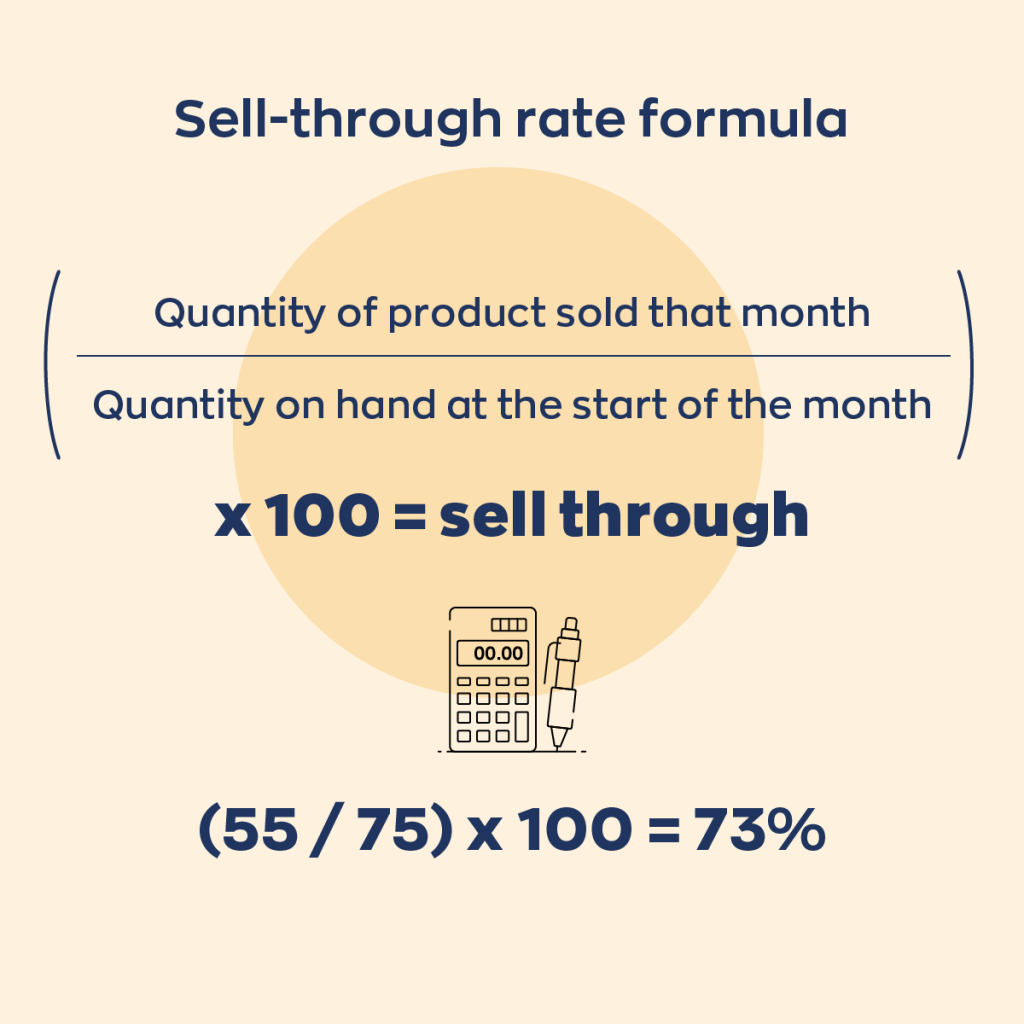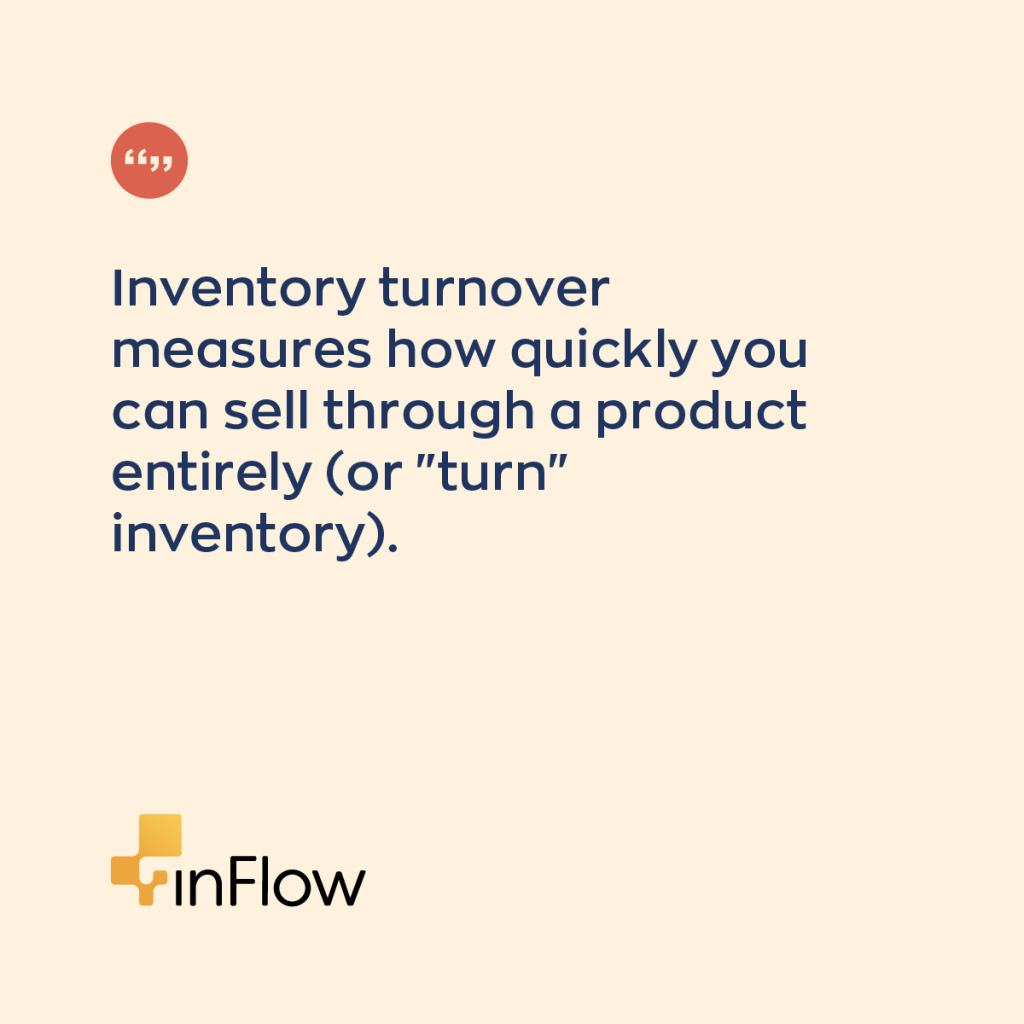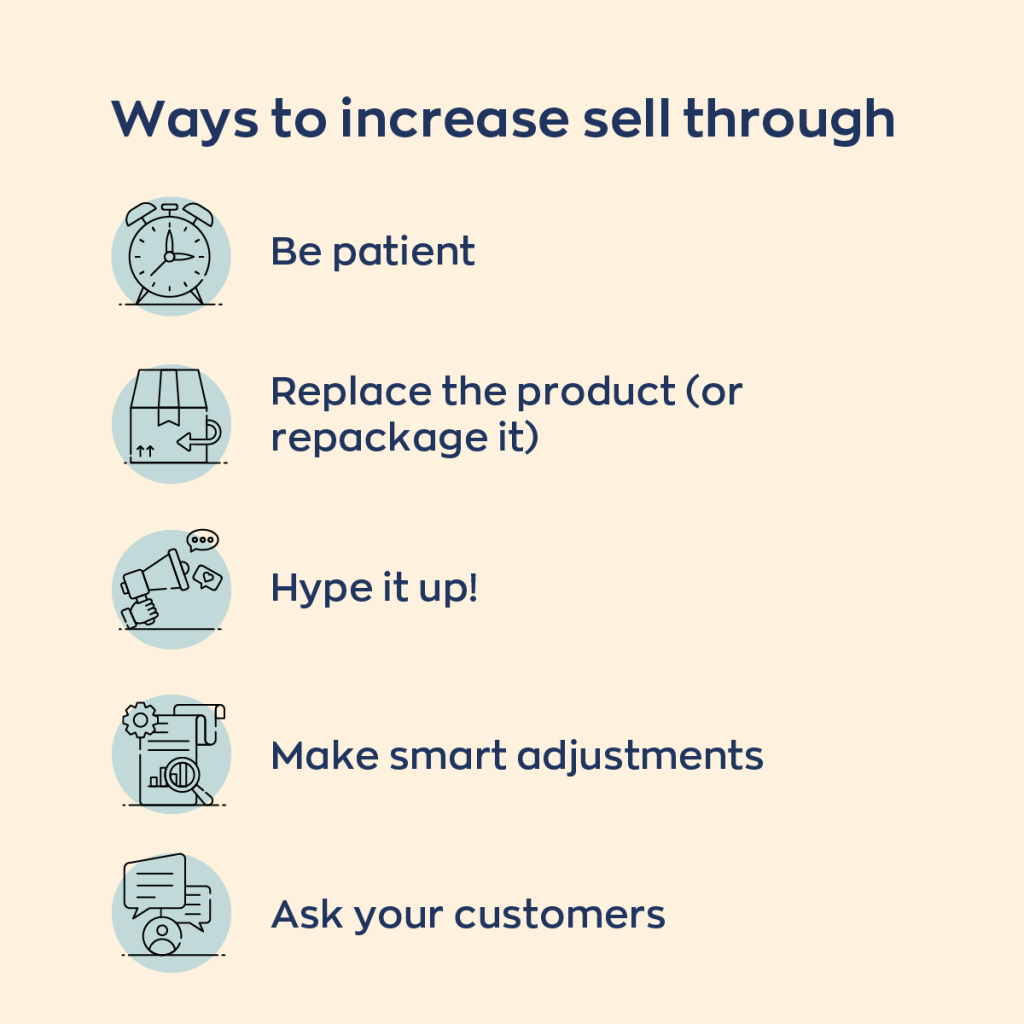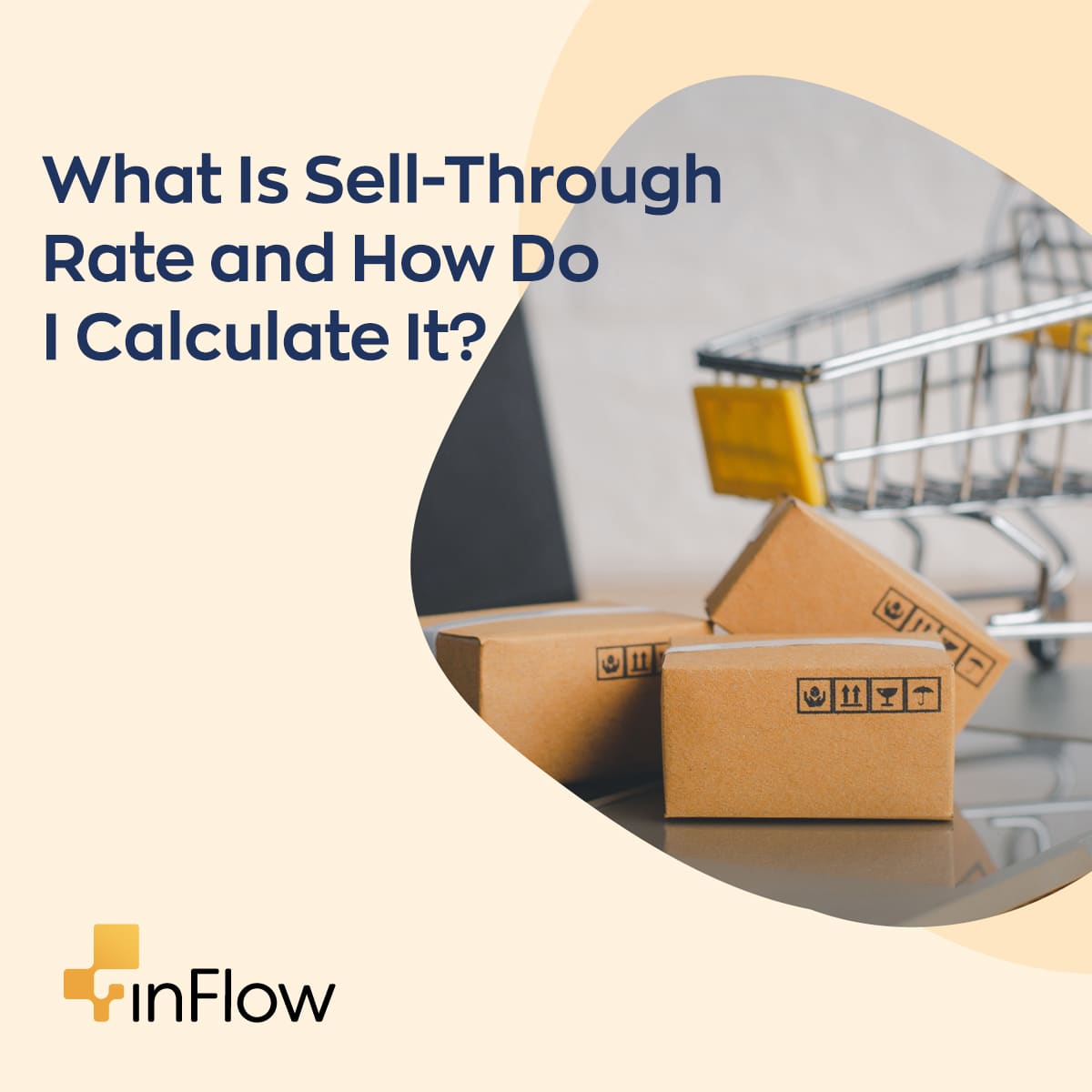If your business carries inventory, you should understand what a sell-through rate (STR) is, how it works, and why it’s essential. Once you grasp the basics, you can improve this key metric for each of your products.
A product’s sell-through will tell you how popular it is, how much you need to order, how frequently you need to reorder, and how much revenue you can anticipate.
Ordering too much of one product and too little of another can cost money and cause serious frustration. However, having a solid grasp on how much inventory to order at the right time will help your business maximize sales, turn profits quickly, and make wise purchase decisions.
What is sell-through rate (STR)?
Your rate of sale is the percentage of inventory you’ve sold throughout a specific period out of the total amount of product you had at the start of that time.
Most businesses recalculate STRs monthly and try to increase this percentage by making strategic changes month over month.
Typically, the higher a product’s sell-through rate is, the better.
Both retailers and vendors should pay careful attention to these rates. Retailers can identify trends throughout different times of the year, such as selling seasonal products around the holidays. Sell-through can also inform what quantities retailers should reorder of certain products in the future based on popularity.
Vendors can measure STR to determine how much product they should manufacture and how to price their items.
How do I calculate sell-through rate?
To calculate the STR of one of your products, simply take your total # of a product sold throughout the month and divide it by the amount of stock you had of that product at the start of the month. Then multiply the number by 100 to get your percentage. You can also find online tools to help you quickly calculate sell-through by Googling “sell-through rate calculator.”
Let’s say, for example, you buy 75 candles to sell in your shop. Throughout the first month, you sell 55 of them. You would divide 55 by 75 and multiply the result by 100 for an STR of about 73%.
What’s the difference between sell-through rate, sell-in, and sell-out?
These three terms are commonly used in the retail and ecommerce space. As mentioned above, sell-through rate measures the amount of inventory that has been sold within a specific period of time.
Sell-in is the initial stage of the selling process and refers to the selling of products from a manufacturer or supplier to a retailer or distributor. For this reason, the information from sell-in data is great for manufacturers to see what is selling at the wholesale level. From there, they are able to better forecast future product production.
Lastly, the actual sale of products from the retailer to the end customer is known as “sell-out”. Therefore sell-out is the final stage of the product sale journey. Understanding sell-out gives retailers a glimpse into customer preferences and behaviors, as well as product performance.
Sell-through rate formula

Compare sell-through by location and platform
Let’s go a step further and say you have two shops in two different cities. You order the same amount of inventory for both locations. By analyzing sell-through rates, you can compare which types of products do better at each location.
Online vs. offline is also an important consideration. Some items may sell better online, while others may do better when people can see, touch, or smell them in person.
Online platforms like Amazon, Etsy, eBay, and Shopify also have niches for their audiences. For example, Etsy buyers tend to be more crafty, whereas eBay caters to people with a bidding mindset, so they’re out to get the best deal. You might need to try a few ecommerce platforms before finding the highest return on investment (ROI) for your products.
Sell-through rate vs. inventory turnover
Sell-through rates focus on how much was sold in a given period of time, while inventory turnover ratio (or turnover rate) measures how quickly you go through a product (or “turn” inventory).
Knowing your turnover rates per product will help you order the optimum amount at the correct times of the year. For example, you might have a faster turnover rate on toys during the Holiday season (Q4) but a slower turnover rate in Spring (Q2).
The faster your inventory turnover is in a given period, the more stock you might need.

Why is sell-through important?
Sell-through indicates how efficiently your business can sell inventory. When it comes to inventory management, sell-through is one of the most commonly used (and most important) key performance indicators (KPI). It helps you determine how much and how frequently you need to reorder or purchase new inventory.
Your goal is to maximize sell-through for all of your products. If you have high sell-through rates, you’re turning items over quickly and can avoid paying to stock excess products. If you have an item with a low STR, it will cost your business money, taking up valuable shelving space and tying up your cash.
What to do about a low STR
If you have an item with a low sell-through rate, there are a few things to consider:
- Do you need to market the product differently?
- Did you order too much inventory at one time?
- Is the price too high?
- Do you need to replace it with a trending product?
- Is it a seasonal item you shouldn’t sell right now?
Seasonality can have a significant effect on STR. You may have an item that retails well during a particular time of the year (e.g., a wool blanket with an 85% STR during December). On the flip side, you might order a product you have difficulty turning over during specific months (e.g., a picnic tablecloth with a 30% STR in October).
Once you figure out the problem, you can adjust your inventory strategy accordingly.
What is a good sell-through rate?
Desirable sell-through rates vary by industry, season, platform, and your individual business goals and tactics. Remember that a good STR for your business may not be considered adequate for another company—and vice versa.
Generally, a sell-through rate of 80% or higher is considered excellent. While anything under 40% should raise some red flags.
In any case, you need to determine what you consider a strong STR benchmark for your business based on your goals and trends in your industry. As has been noted, if an item’s sell-through rate is very high, over 85%, you may need to increase your pricing or inventory. On the other hand, if your sell-through is on the lower side, like under 30% or 40%, you may need to lower the price, offer customers a discount, or order less of that product next time.
How can I increase sales for my business?
If you have a product that isn’t retailing well, test out the following strategies for increasing STR and decreasing stagnant inventory.

1. Be patient.
If you have a new product on the shelf, it may just need some time to gain attention and traction with your customers. In fact, you may need to do a better job of getting it in front of people or promoting its launch.
2. Replace the product (or repackage it).
If you’ve been patient and your new item still isn’t moving after a month or two, it may be best to free up the shelf space to make room for a better-selling product. Another option (if it’s cost-effective for you) is to bundle the item with another related product.
3. Hype it up!
Can you promote the product by offering a discount, through advertising, or by hyping it up through social media and email? Because sometimes all it takes to boost sales is getting the word out about how great a product is.
4. Make smart adjustments.
Ask yourself if any of the following ideas could effectively help your business make more sales:
● Does a product retail better during a specific season?
● Did you try a different fit or color of a similar product?
● Can you offer a similar product from a brand your customers are more familiar with?
● Do you need to adjust the price?
● Should you order less of the same product?
● Can you get creative and offer a less popular item as an add-on or incentive to buy a pricier item?
In addition, make sure your shop is clean, neat, and set up for success. Never underestimate the power of curb appeal and a positive customer journey–from the moment someone steps in your door (or lands on your website) to check out!

5. Ask your customers.
Send out a survey via email to ask your contacts what you can do to improve your product selection. If there’s a specific product you’re concerned about, ask questions to help you better understand what needs to change.
● Is it too pricey?
● Has it gone out of style?
● What alternatives would your customers prefer?
● Do customers dislike something about it?
● Why won’t they purchase it?
● Is it out of style or out of season?
● Would they be interested in it at another time, or does it just fall flat?
Increase sell-through rates with powerful inventory software
Great inventory management software tracks the quantity and cost of every single sale, enabling you to make strategic adjustments in your business.
inFlow can help you find your inventory sweet spot to increase sales and maximize profit. Our software also has a built-in barcoding system, which makes it even easier to track your inventory with a quick scan as it flows through your system. No more need for manual entries!






0 Comments